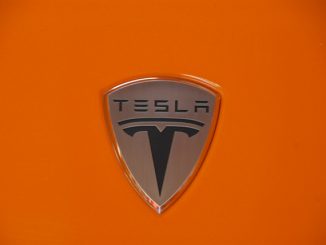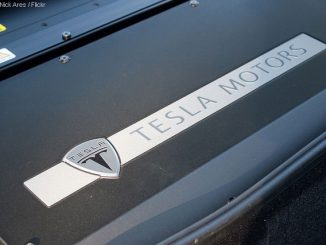My main beef with Tesla Motors (NASDAQ:TSLA) is that it is a major beneficiary of government largesse masquerading as a free market success story. The company received a $450 million loan from the Federal government to set up operations. It has just paid back that loan, but does not justify granting the loan in the first place: indeed, it illustrates the heads-Musk-makes-a-lot-of-money-tails-the-taxpayers-eat-it aspect of the loan. It socialized the risk of loss, and privatized the gains. That’s bad, on principle. (Things might have been ameliorated had the warrant the government received allowed it to participate in the upside, but the exact opposite happened: the warrant went away precisely when the stock price went parabolic.)
But the loan isn’t the biggest source of government support. The $7500/vehicle federal subsidy to purchasers and California’s Zero Emissions Vehicle (ZEV) credit program are. When you look at the value of these subsidies, they dwarf the much ballyhooed profit Tesla reported for the first quarter (and those profits were driven by the write-down of the warrant and non-repeatable gains on yen exposure).
I’ve done some back of the envelope calculations to estimate just how much these subsidies benefited Tesla’s shareholders. The basic idea is to calculate profits with and without the subsidies based two assumptions about the demand for Teslas: a constant elasticity demand curve and a linear demand curve.
The linear case is easiest to explain. The equation is P=A-bQ, where P is price and Q is quantity sold. A and b are constants that need to be solved for. P and Q are known for the first quarter: I’ll use $75K for P (the average price of a Model S) and Q is 4750. If Tesla was maximizing profits, it would set its marginal revenue equal to marginal cost, where the marginal cost nets out the subsidies. The relevant equation is C-S=A-2bQ. I derive C from the cost of generating revenue reported in the 10Q. I divide this sum by Q, and then multiply by .6 because the cost number includes some fixed costs (e.g., tooling) and I want marginal cost: it turns out that the results I derive aren’t that sensitive to the multiple. For S I add $7500 and Tesla’s ZEV credit revenues (reported in the 10Q) divided by the number of vehicles sold. I now have 2 equations, and can solve for the unknown constants A and b.
I now have all I need to know to figure out revenues (including subsidy payments) net of variable costs. This totals $206 million. I can also figure out the price and quantity of Teslas sold without the subsidy. Absent subsidy, Tesla would choose Q to satisfy: C=A-2bQ, which gives Q=(A-C)/2. This can be plugged back into the price equation.
Doing this gives a no-subsidy quantity of 3558 (about 70 percent of the with-subsidy sales) and a price of $91K. Using these numbers, and the assumed unit cost gives a no-subsidy profit (before fixed costs, etc.) of $116 million.
In other words, in this specification, Tesla pocketed about $90 million due to subsidies in one quarter alone. That represents about 18 percent of its auto sales revenues, and dwarfs its profit even including the one-time boosters.
In the constant elasticity specification, I need to solve for the demand elasticity and the constant multiplying the Q raised to the elasticity. Given the price, quantity, cost, and subsidy numbers, I can solve for these two constants using the demand equation and the marginal revenue equals marginal cost equation. Given these constants, I can figure out profits with and without subsidies.
In the constant elasticity case, profit with subsidies (before fixed charges) is again $206 million, and profit without the subsidies is estimated to be $139 million. So in the constant elasticity specification, subsidies pad Tesla’s profits by $67 million.
These are numbers for one quarter, folks. This is money out of your pockets, or the pockets of shareholders of Ford (NYSE:F), Toyota (NYSE:TM), etc., who have to buy ZEV credits. Tesla would still be drowning in red ink absent the fat subsidies.
I sure hope you are enjoying Mr. Musk’s Wild Ride at your expense. Your enjoyment being completely vicarious, of course, expect for the paying for it part. That’s something you experience personally.
I would hope that these figures put the hype in perspective. Tesla cars are fueled by electricity. Tesla Motors is fueled by government money. Your money.
One more thing. Tesla and Musk are neck deep in a relationship with Goldman-Sachs, aka Government Sachs. Think that it’s just maybe possible that Goldman will deploy its notorious political heft to keep the rain of government manna going? If you doubt that, can I interest you in a bridge connecting two boroughs in NYC? Which makes it doubly ironic-and nauseating-that many of the Tesla Kool Aid Gang also declaim against crony capitalism. Well, so do I, except I at least do so with a modicum of consistency.
- Bulenox: Get 45% to 91% OFF ... Use Discount Code: UNO
- Risk Our Money Not Yours | Get 50% to 90% OFF ... Use Discount Code: MMBVBKSM
Disclaimer: This page contains affiliate links. If you choose to make a purchase after clicking a link, we may receive a commission at no additional cost to you. Thank you for your support!





Leave a Reply